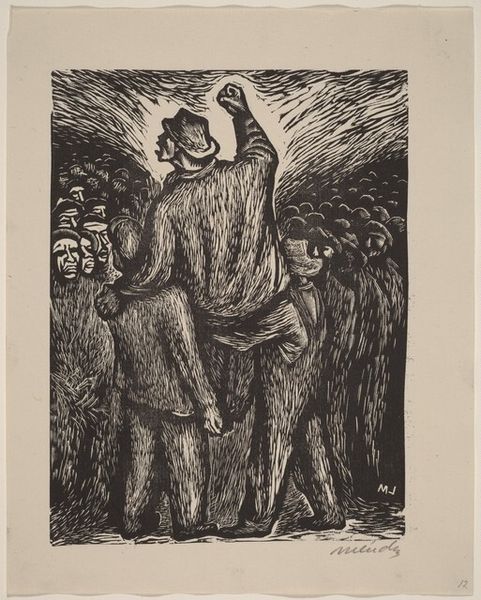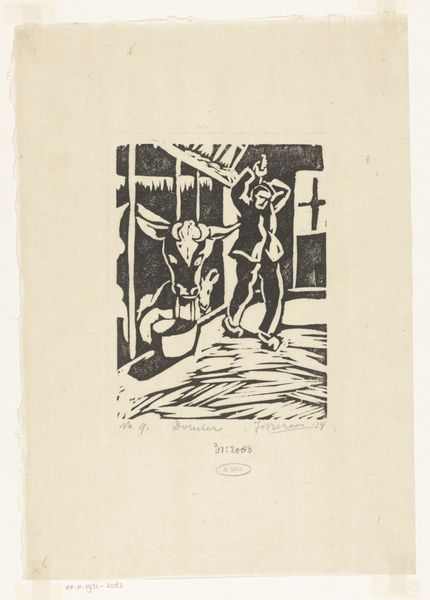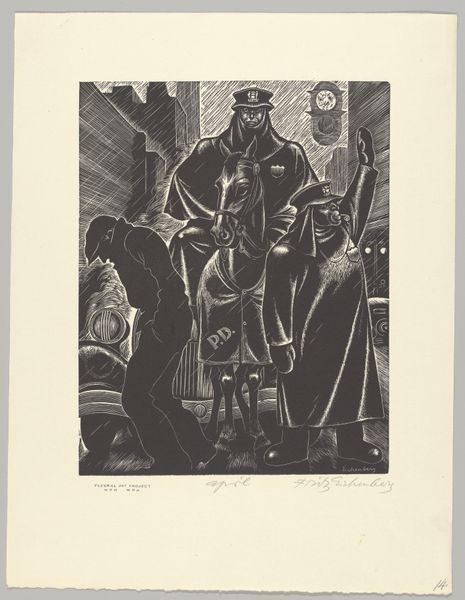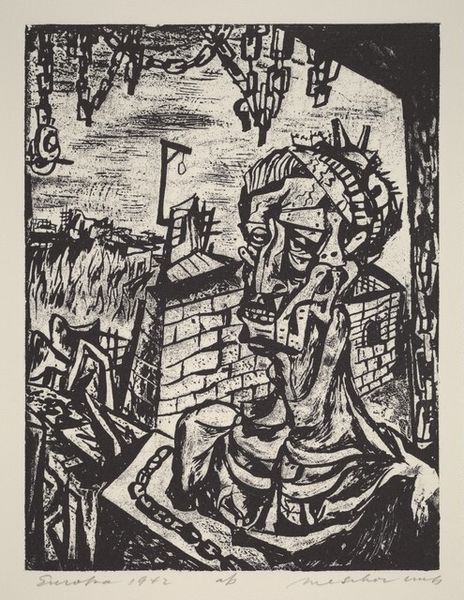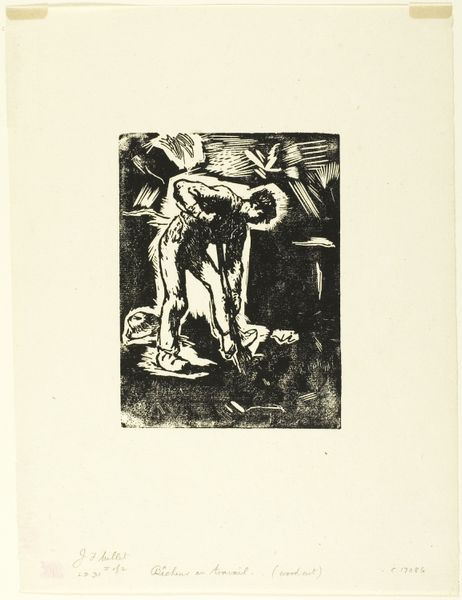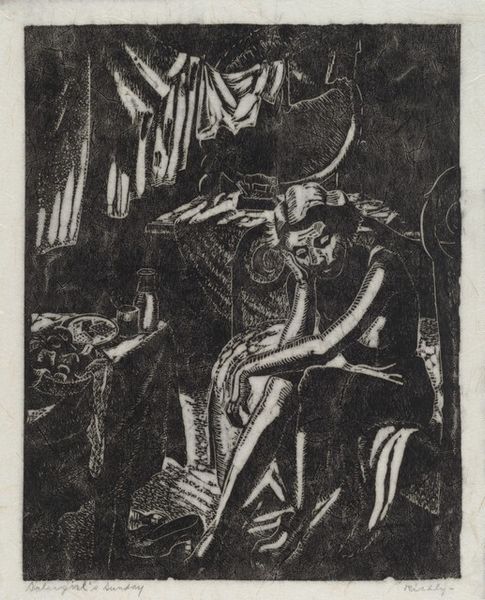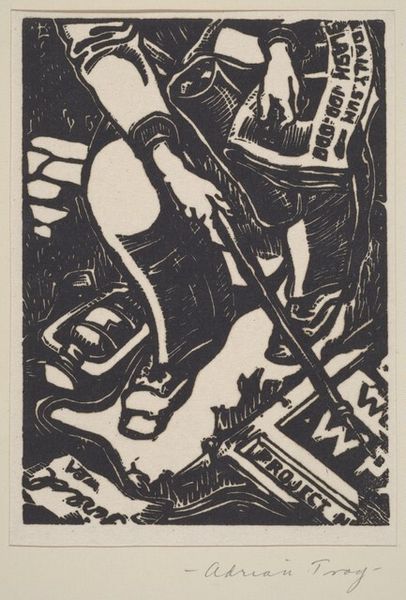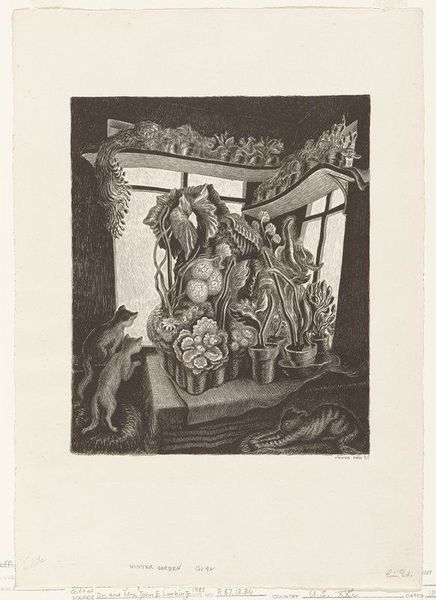
graphic-art, print, woodcut
#
graphic-art
#
ink drawing
#
narrative-art
# print
#
figuration
#
social-realism
#
woodcut
#
line
#
mexican-muralism
Copyright: National Gallery of Art: CC0 1.0
Curator: Leopoldo Méndez created this striking woodcut, "Newsboys," in 1943. Editor: The sharp contrasts really jump out, almost aggressively. It feels like it’s printed directly on my skin. The composition is also quite visceral, what's happening here? Curator: Méndez was deeply involved in Mexican muralism and printmaking, specifically engaging in social realism. This print critiques socio-economic disparity through the stark imagery of impoverished news vendors and the elites exploiting them. Notice the figures in the background and then look at what the figures are lying upon. Editor: Yes! Now I see... They're resting on what looks like printing blocks, etched with fine lines like the currency they lack. It speaks volumes about how their labor literally underpins the wealth they’re denied. The messages of fair wages in the foreground are like banners but so thin, delicate to touch almost. What of that looming hand, seemingly divine? Curator: It signifies the elite's disproportionate control, turning worker exploitation into lottery luck. Méndez consistently employed printmaking—woodcuts especially—for its accessibility and directness. It was a conscious choice, contrasting starkly with the exclusive nature of fine art aimed at upper classes. The bold lines and contrasts leave no room for ambiguity. Editor: Absolutely, the medium amplifies the message. You feel the pressure of the printing block. His choices reject precious materials; instead, this is raw, accessible, meant to be distributed and discussed. A direct line to protest. I hadn’t known of his technique previously, so this really informs my feelings. Curator: Méndez sought art that served the people, exposing injustice through easily reproducible and affordable means. He wasn't aiming for museum walls but for widespread awareness. I agree that the medium and the way it’s worked contribute significantly. Editor: Reflecting on Méndez's "Newsboys," I’m reminded that the materials and processes of art are inherently political. It’s hard not to respond to art’s message when confronted in such stark physical terms. Curator: And seeing how an artist mobilized art so intentionally within their political landscape invites us to reassess art's role today. To reflect on its potential to shape, question, and activate dialogue within a modern society—a fitting close to a rather compelling artwork.
Comments
No comments
Be the first to comment and join the conversation on the ultimate creative platform.


